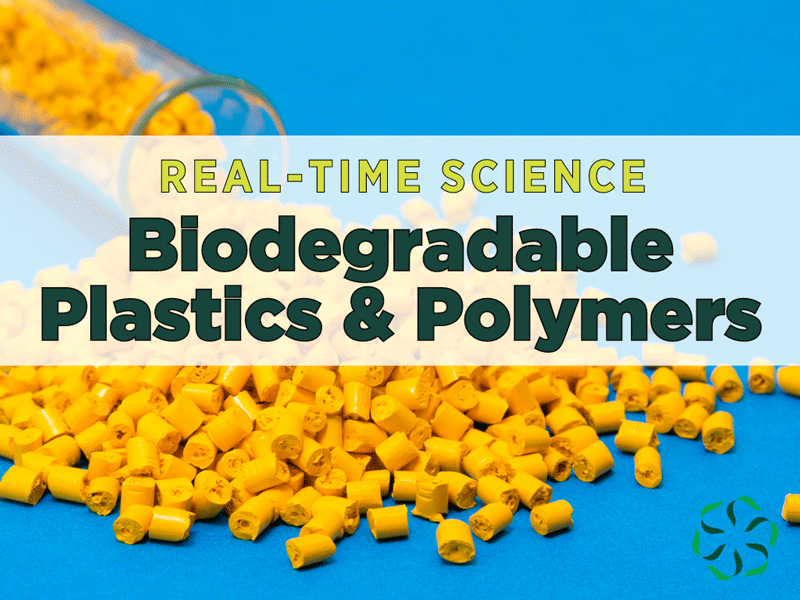Plastic and polymer science continues to advance as researchers develop polymer materials that can degrade with limited human intervention. In this post, we look at biodegradable plastics and polymers.
What are plastics and polymers?
There is no singular agreed-upon definition for plastic. Plastics, as a term, is used to describe a vast array of materials composed of polymer-containing compounds.
Generally, folks consider plastic to be synthetic or semi-synthetic polymers that are lightweight, strong, durable, and, when desired, flexible. Polymers identified as plastics can be made by extrusion, injection molding, vacuum forming, and compression to make fibers, thin sheets, and other specific objects.
Plant-based plastic and polymer materials, sometimes called bioplastics, are often biodegradable and compostable polymers developed from renewable biomass sources like corn, straw, and other crops.
Polymers differ in composition, degradability, biodegradability, structure, function, solubility, and more.
Learn more about plastic and polymer materials at go.msu.edu/s3C5.
What is the difference between biodegradable and compostable plastic and polymer materials?
In general, biodegradable means existing microorganisms in the environment will break down the material. The polymer will decompose into compounds like carbon dioxide, water, nitrogen, and more that are usable by many plants, animals, and other organisms.
Compostable means it will require varying degrees of human intervention to create an environment favorable for the polymer materials to break down into soil. In a composting environment, typically, there will be natural plant materials, desirable microorganisms, and a system to ensure proper heat, air circulation, and more to optimize the system and ensure materials become soil.
What are biodegradable plastics and polymers?
Some polymer materials are designed to break down relatively quickly in the environment.
In the United States, the Federal Trade Commission defines biodegradable materials as substances that will completely mineralize in one year or less.
However, international companies typically follow the definition of biodegradable put forth and agreed upon by the Organisation for Economic Cooperation and Development (OECD), of which the United States is one of 38 member nations.
The OECD defines four general classifications of biodegradability.
- Highly biodegradable, meaning it will break down within ten days.
- Readily biodegradable, meaning the majority will break down within 28 days.
- Intermediate in biodegradability, it appears to break down within the 28-day window but isn’t complete.
- Inherently biodegradable, not biodegradable within 28 days, but shown to biodegrade over a longer time.
Let’s look at two common biodegradable polymers: Polyvinyl Alcohol (PVA) and Polyethylene Glycol (PEG)
We use biodegradable polymers in our everyday lives because they can break down quickly and safely in the environment without additional human interventions.
However, these ingredients may break down faster with human interventions like adding specific microorganisms.
Polyvinyl alcohol (PVA) is a water-soluble synthetic polymer, and we encounter it in various applications, from glue to medications to food packaging to pods.
Polyethylene glycol (PEG) is a water-soluble synthetic polymer that serves as a binder, emulsifier, and more.
PVA and PEG are both examples of polymers that are readily biodegradable at similar rates when in the presence of optimized microorganisms found in water treatment plants (1,2,3,4).
Are all plant-based plastics and polymers biodegradable or compostable?
Just like petroleum-based polymers and plastics, plant-based polymers and plastics will have varying properties that determine how they degrade over time and what conditions need to be met for the material to degrade.
It’s important to understand that a polymer or plastic created from a plant source isn’t inherently better than a petroleum source. It all depends on the individual material and the material’s properties.
The good news.
There are many products on the market and innovations forthcoming that can help us tackle pollution by various polymers. It’s important to keep pursuing greener polymer technologies so we can safely and effectively meet society’s needs.
If you have any questions about foods and ingredients, please reach out to us via email or submit your idea to us at go.msu.edu/cris-idea

